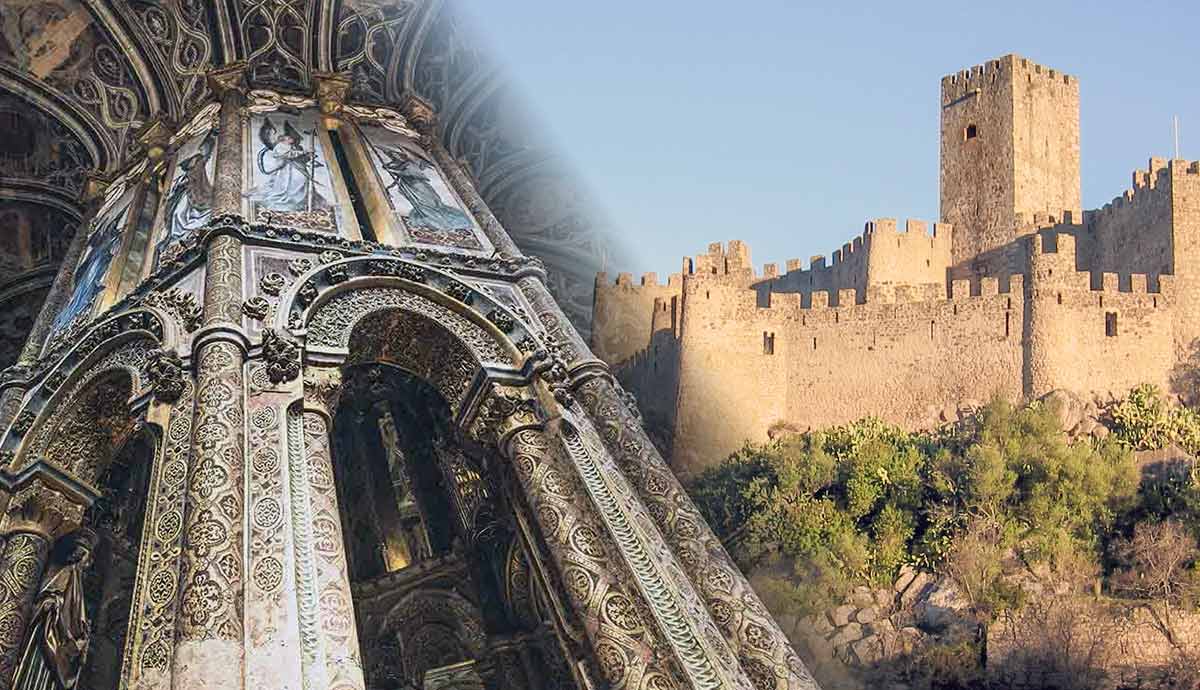
Known as the “Gibraltar of the East,” Monemvasia is a rocky Greek island with a rich Byzantine and Venetian history. A completely walled city, its strategic location made it an important trading port for both empires. This combination made for a unique blend of cultures whose influence can still be seen today. This article explores the fortified city’s complex past and modern-day ways visitors can experience its history.
What Is Monemvasia?
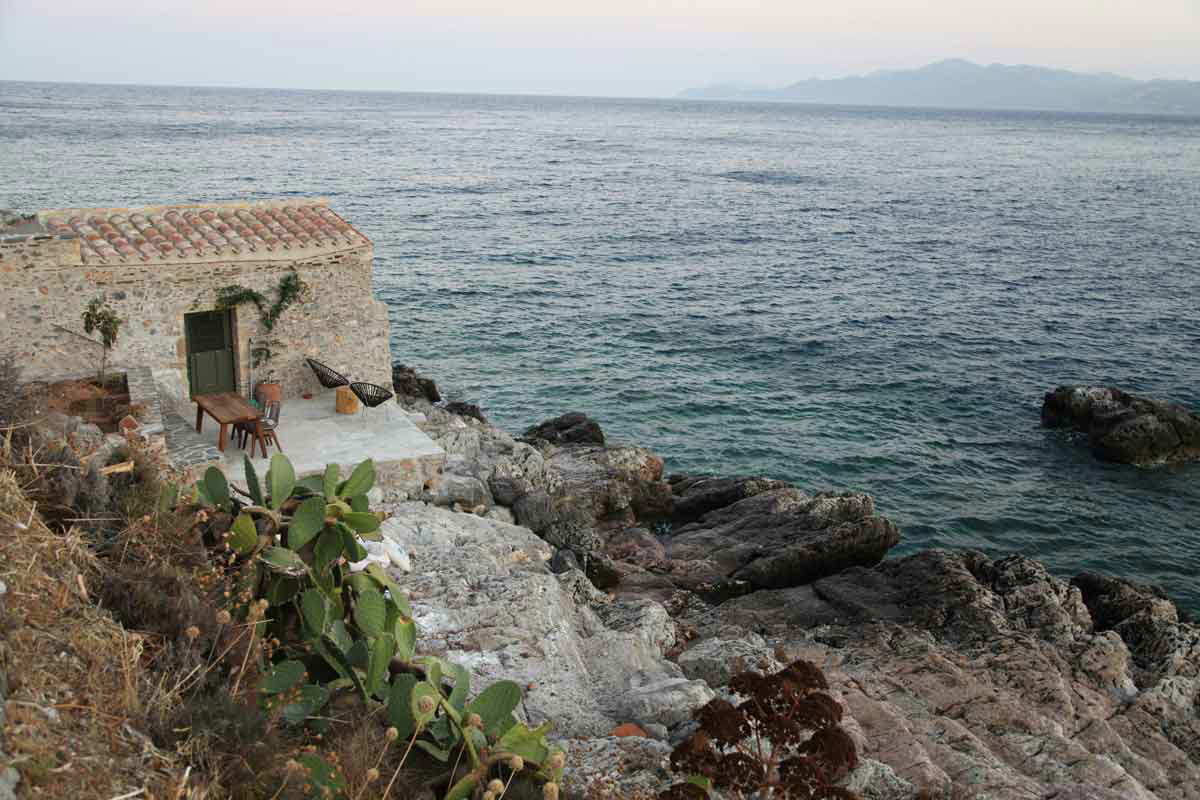
Often overshadowed by classic ancient Greek tourist sites like the Parthenon in Athens, Monemvasia is a product of the Byzantine and Venetian empires. Located in the south-eastern part of the Peloponnese, the walled city is widely considered the most romantic town in Greece. Beating out the likes of Santorini and Mykonos, Monemvasia exudes a charm that can not quite be found anywhere else.
It should be noted that before the arrival of the Byzantines and Venetians, the city was initially founded by Early Medieval Greeks. Monemvasia was originally settled in the 6th century CE by Spartans who had abandoned their nearby homes thanks to Slavic invaders.
The city itself sits on a giant rock that protrudes from the Aegean Sea. Despite being an island, visitors can take a cab or walk 20 to 30 minutes across the man-made bridge connecting old Monemvasia with its modern-day counterpart. Inside the walled city, visitors will find museums, shops, a swimming spot, and accommodation options. Note that no cars are allowed within the old city limits. However, travelers can easily stay on mainland Monemvasia if they prefer to have access to a vehicle.
The Byzantine Empire’s Effect on Trade in Monemvasia
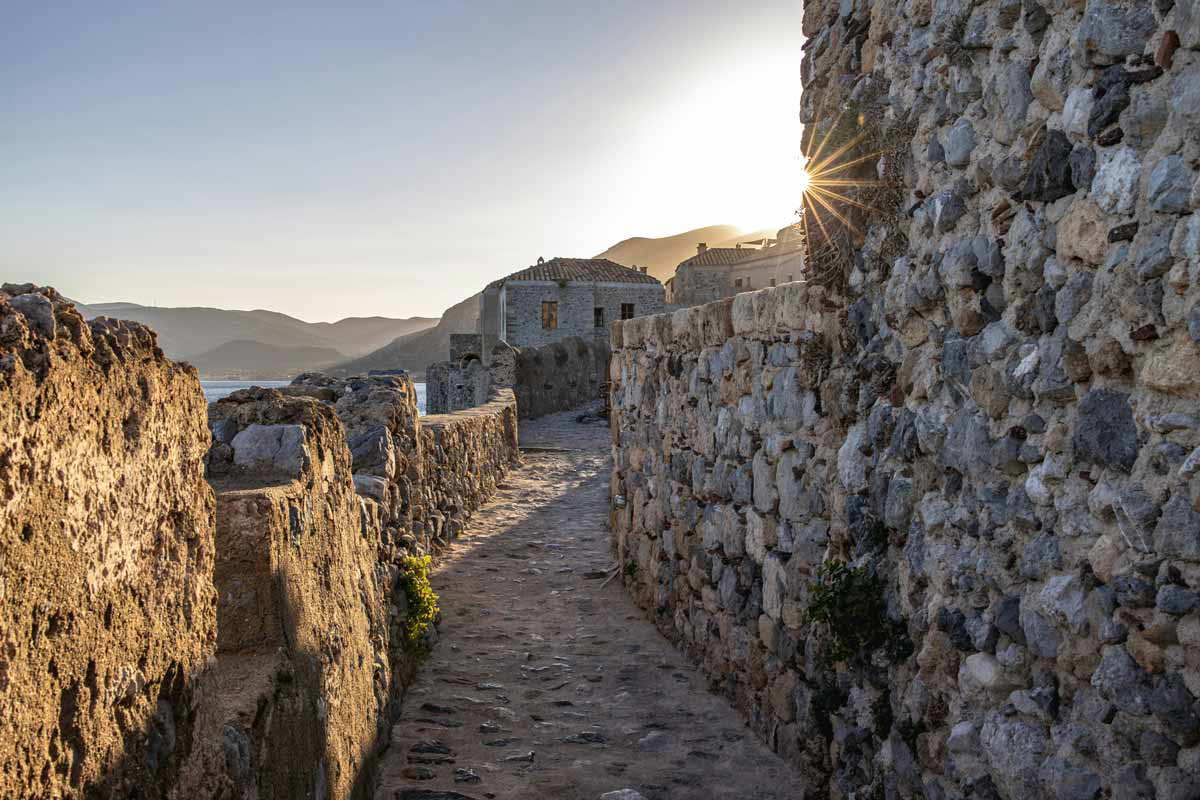
Monemvasia’s prime location made it an obvious choice for the Byzantines. Positioned along critical maritime routes, it quickly became a strategic hub for commerce in the Mediterranean. The city frequently served trade between Europe, Africa, and even Asia. Interestingly, Monemvasia became specifically known in the trading world for its Malmsey wine. This Malmsey wine is even mentioned in William Shakespeare’s Richard III.
Additionally, its location attracted trade ships because of the safety it provided. Ships coming to Monemvasia were often protected from both storms and pirate attacks. Monemvasia served as a key outlet for exporting goods such as silk, spices, and other luxury items brought from the East. All of these factors combined cemented the city’s importance as an economic link between civilizations.
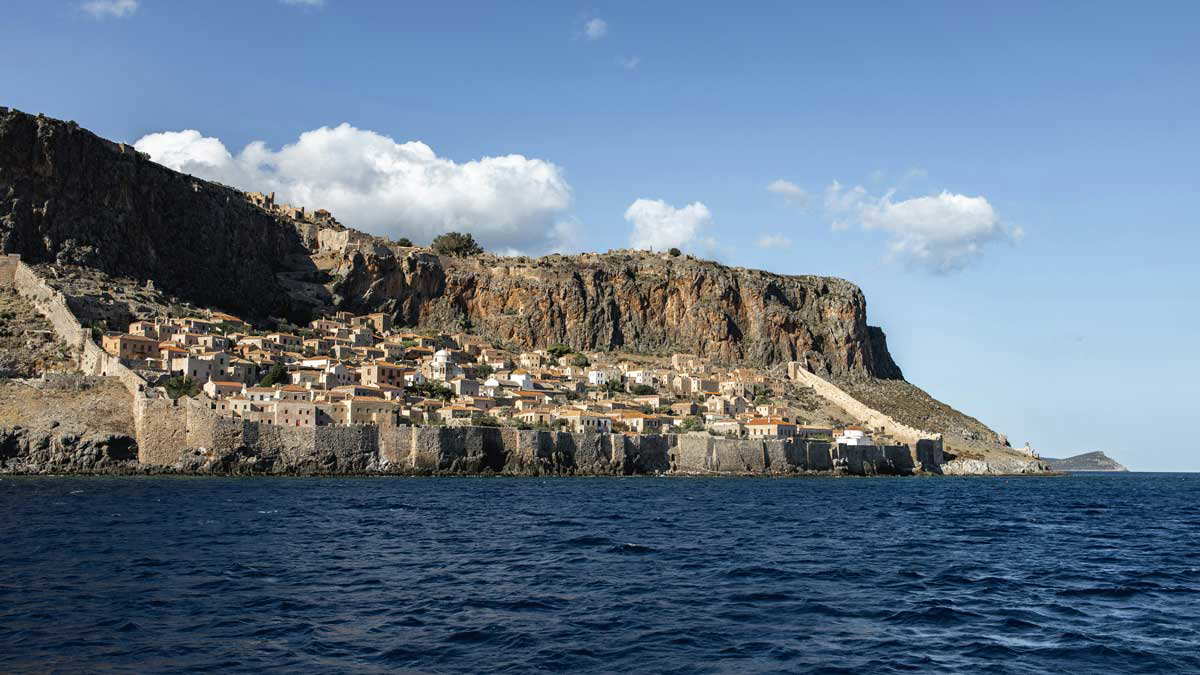
The exact timeline of the Byzantine’s presence in Monemvasia is a bit convoluted. It frequently changed hands between Crusaders, Venetians, and the Turks. However, historians can point to the late 6th century CE as the time that Emperor Maurice established the city. It remained a part of the Byzantine Empire fairly consistently until 1460 CE.
What Changed in Monemvasia During the Venetian Era
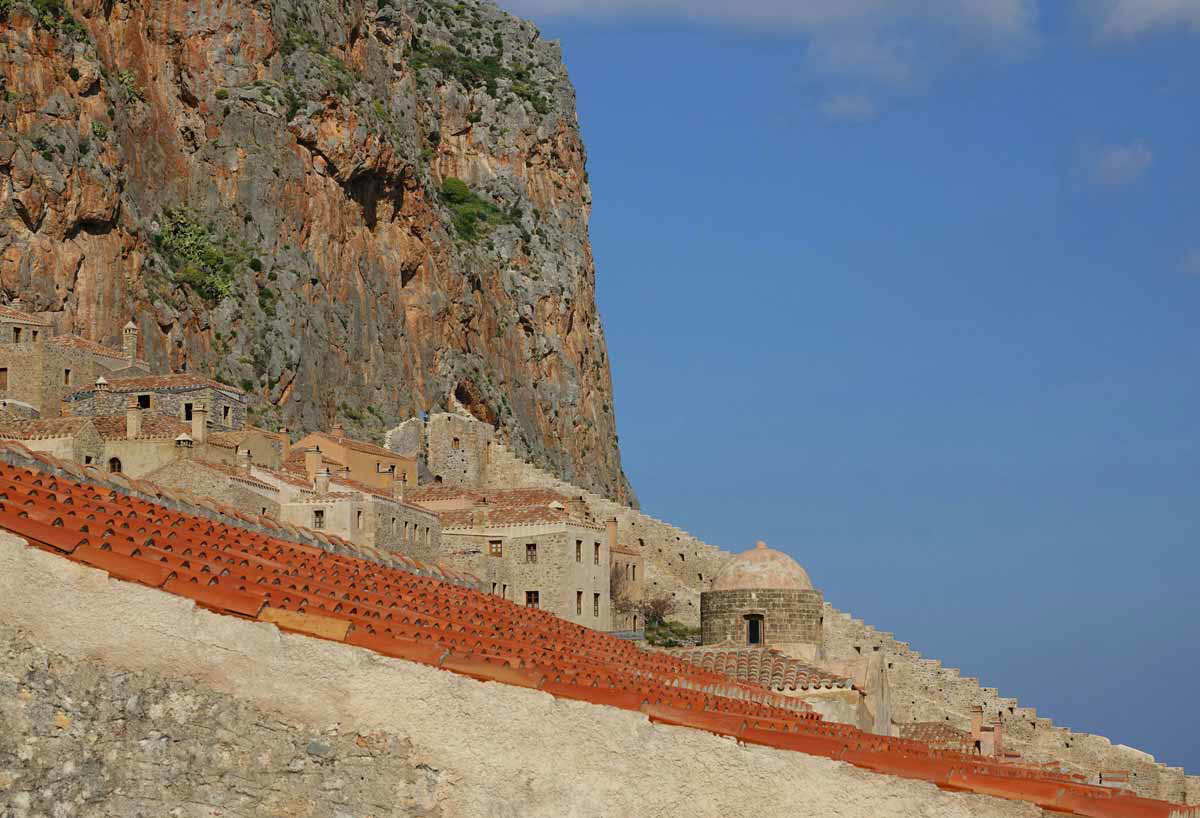
The Venetians were present a few times in Monemvasia throughout history. However, 1690 CE is widely considered the true “start” of the Venetian era in the city. Monemvasia became an even more critical naval and commercial outpost for the Venetian network after the recapture of the city from the Ottomans during the Morean War. While the Byzantines laid the foundation, the fortified walls we see today are a direct result of the Venetians. They created these defensive barriers largely to protect themselves from the rising threat of the Ottomans.
In addition to several new fortresses, the Venetians were responsible for creating stone mansions. Most of these traditional Venetian homes were two stories and included a basement and a balcony. If the home had a third floor, it signified that the owner was financially well-off. Originally, these homes were constructed in the Upper Town. However, as history and conflicts continued, many people moved to the Lower Town. Many of the homes in the lower town are still inhabited today, either by residents or serving as hotels.
Culturally, the Venetians introduced elements of Renaissance art and architecture. Despite these advancements, the Venetian hold on Monemvasia was often contested and led to periods of instability. Nevertheless, this era left a lasting mark on the city’s identity that still feels alive today.
Experience History: Things to Do in Monemvasia
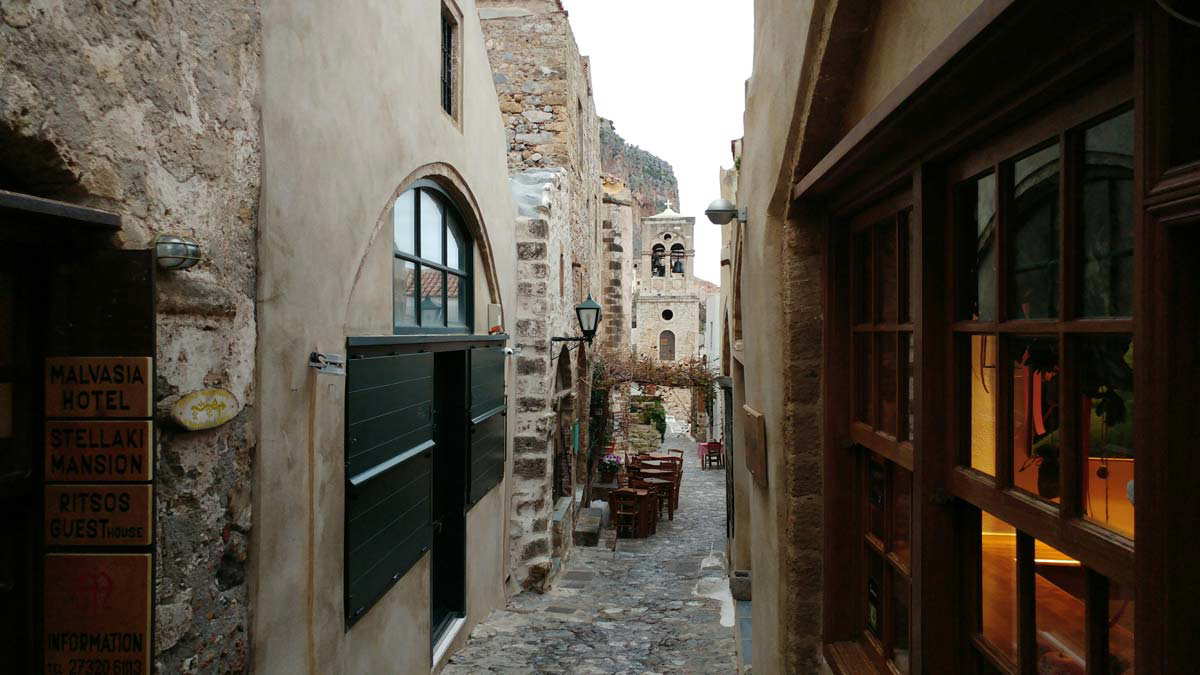
While we can’t quite step into a time machine, there are a few experiences and activities in Monemvasia that can transport us back to this bygone era. Add the following experiences to your itinerary to get as close to history as you can:
Monemvasia Castle
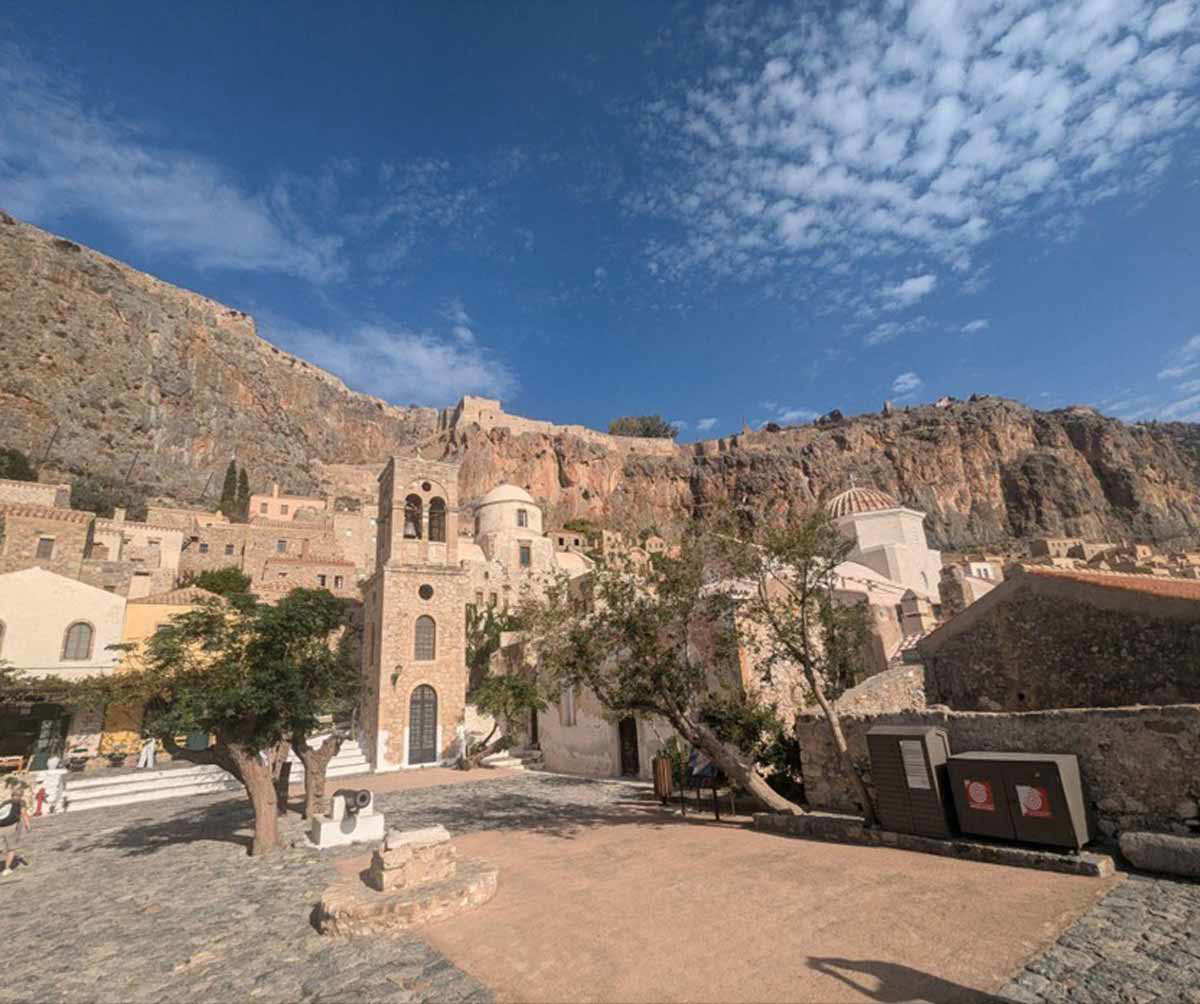
Approaching Monemvasia Castle is truly a magnificent sight. The impressive walled castle rises out of a massive rock formation. As mentioned, the island is only accessible by a narrow road. However, once inside the city walls, you must continue your journey on foot. It should come as no surprise that the word “Monemvasia” is derived from two Greek words to mean “Single Entrance.”
The castle was built by the Byzantines in 583 CE. Their purpose was to create a fortress to protect themselves from the Slavic and the Avaric invasions of Greece. Eventually, the fortress became an important trading center. When the Venetians took over, they further fortified the structure to make it even more impenetrable.
Today, visitors can tour the remains of the castle and explore the still-lively town beneath its shadows. The streets are lined with stone buildings, cafes, shops, and boutique hotels. When walking or driving to the entrance, keep your eyes peeled for a local swimming spot about a third of the way up the road.
Holy Church of Hagia Sophia
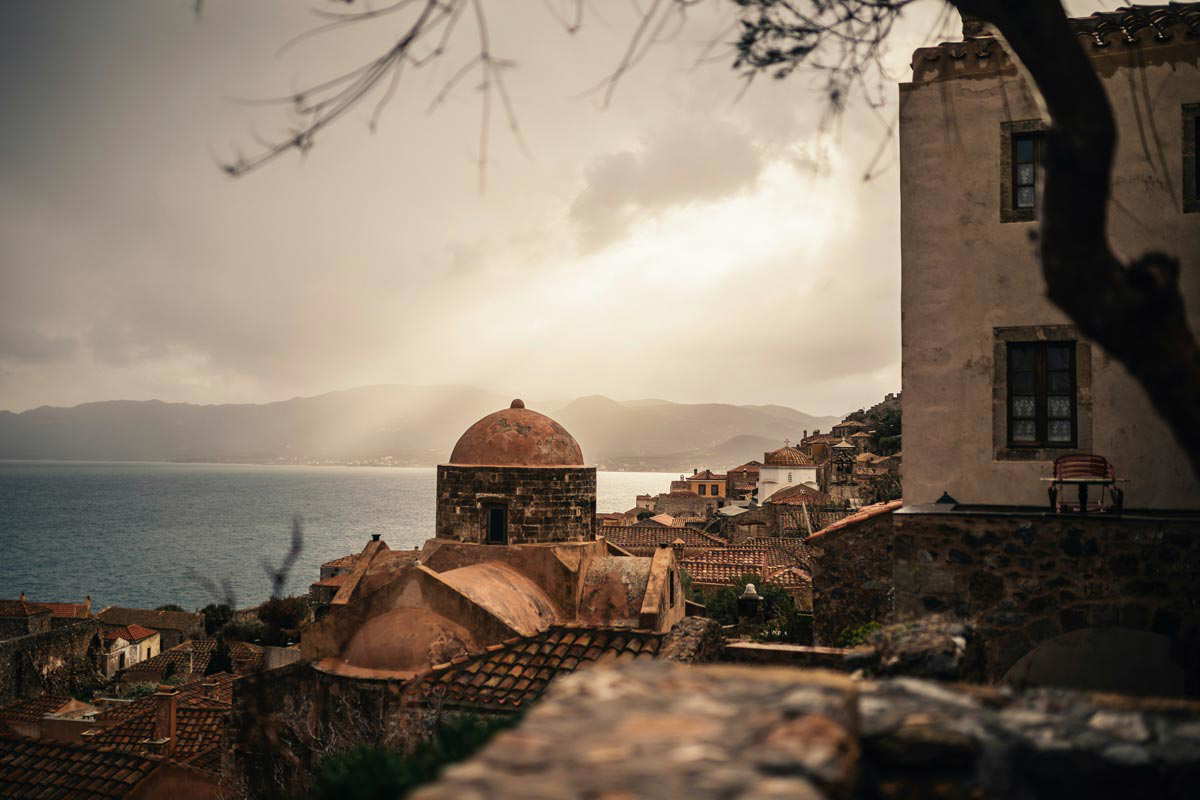
Built in the 12th century CE, the Holy Church of Hagia Sophia is one of the most important churches from the Greek Byzantine era. Emperor Andronicus II constructed it to honor the Virgin Mary. This church is not to be confused with the iconic Hagia Sophia in Istanbul.
When the Venetians took over, the structure was converted into a Catholic church. During a brief period of Ottoman control in the 16th century, the church was used as a mosque. However, after Greek independence in the early 19th century, the church was restored as a place of worship for Orthodox Christians.
Today, visitors can admire the stunning frescoes and mosaics that adorn the walls and ceilings of this holy place. While the climate can be extremely hot, remember to bring a scarf or sweater to cover your shoulders when visiting the church. Those without proper garments may be turned away from entering this place of worship.
Upper Town
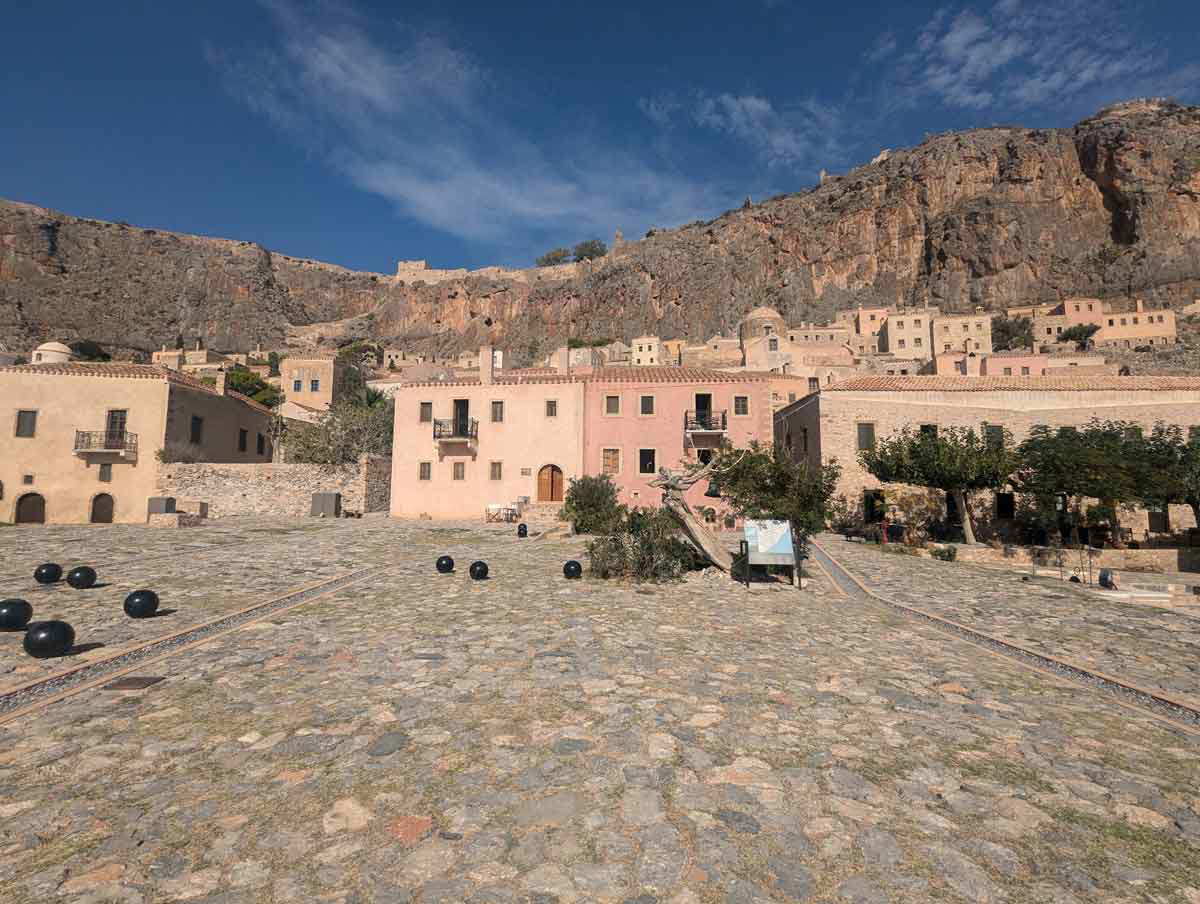
While the Hagia Sophia is the only remaining structure, a visit to the Upper Town is worth your time. Also known as the “Acropolis,” the Upper Town is accessible via a steep set of stairs. Once you make it, imagine over 500 structures on this hill in its heyday.
Previously home to the “rich and famous” of Monemvasia, you’ll find ruins scattered amongst bushes and flowers. While there aren’t many physical things to see in the Upper Town, it is well worth a climb to envision what was once here while looking out at the Aegean Sea.
Monemvasia Winery
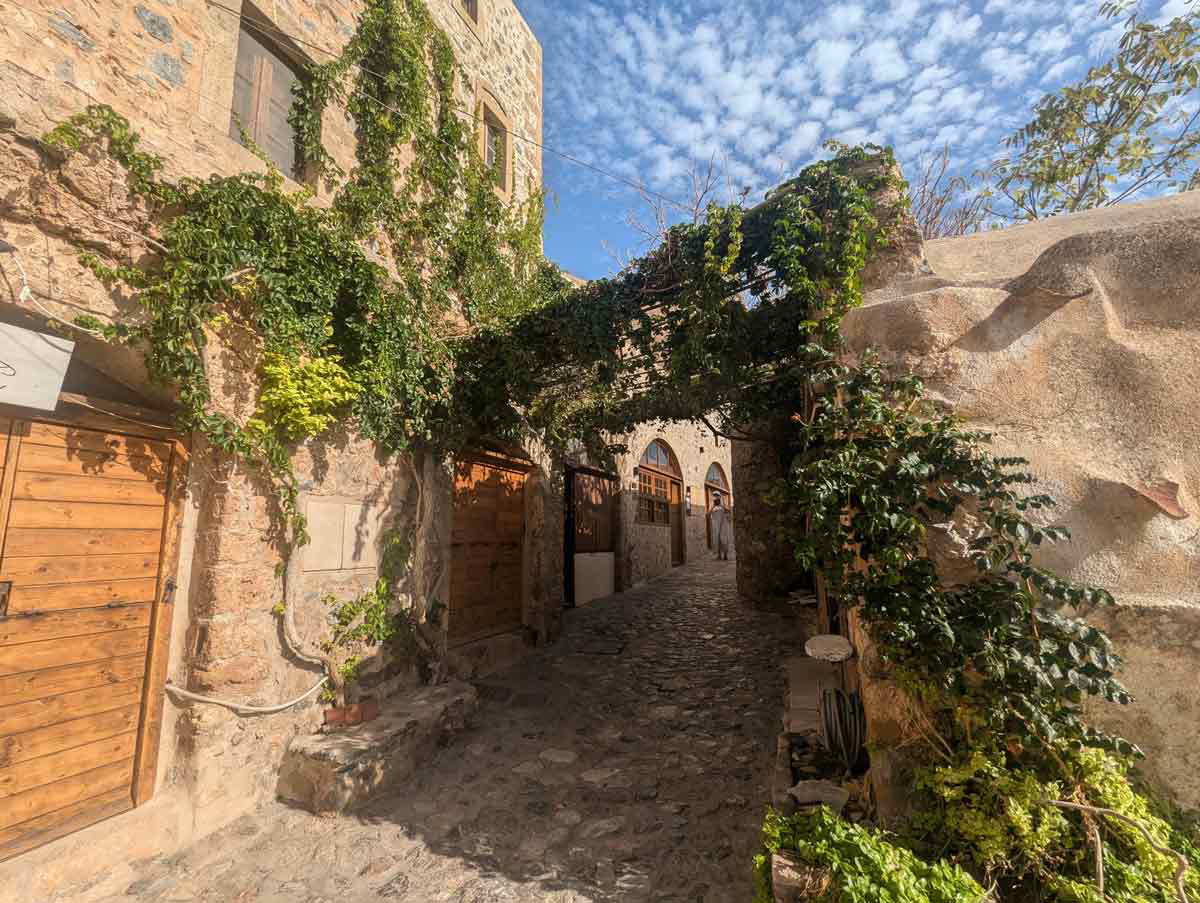
While Monemvasia Winery was founded in 1997, its regional wines can teach us many things about the history of the Peloponnese. Like olive oil, wine is an important export of this unique region of Greece.
Monemvasia Winery produces a variety of wines, including white, red, and dessert wines. Tours of the winery are available for those interested in learning more about the wine-making process. Plus, the best way to learn is by doing, so do as the Greeks do and enjoy a glass of local wine.
Archaeological Collection of Monemvasia
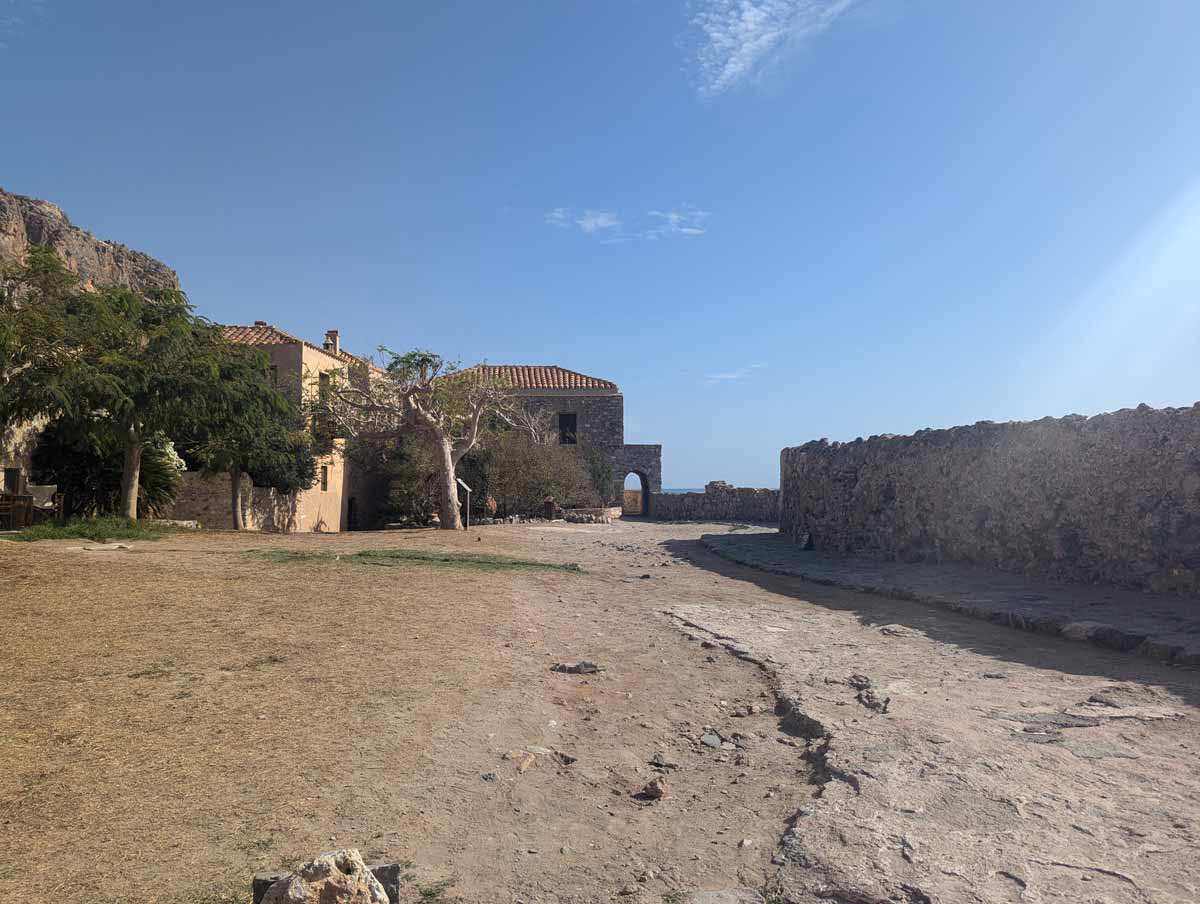
For an in-depth look at the history of the city, visit the Archaeological Collection. This collection features sculptures and ceramics in a historic Ottoman-era mosque in the town’s main square.
Most of the sculptures are from the aforementioned Hagia Sophia, as well as the city’s ruined mid-Byzantine church. Additionally, visitors can expect to see artifacts from the early Christian, Byzantine, and post-Byzantine periods.
Snorkel Ancient Monemvasia
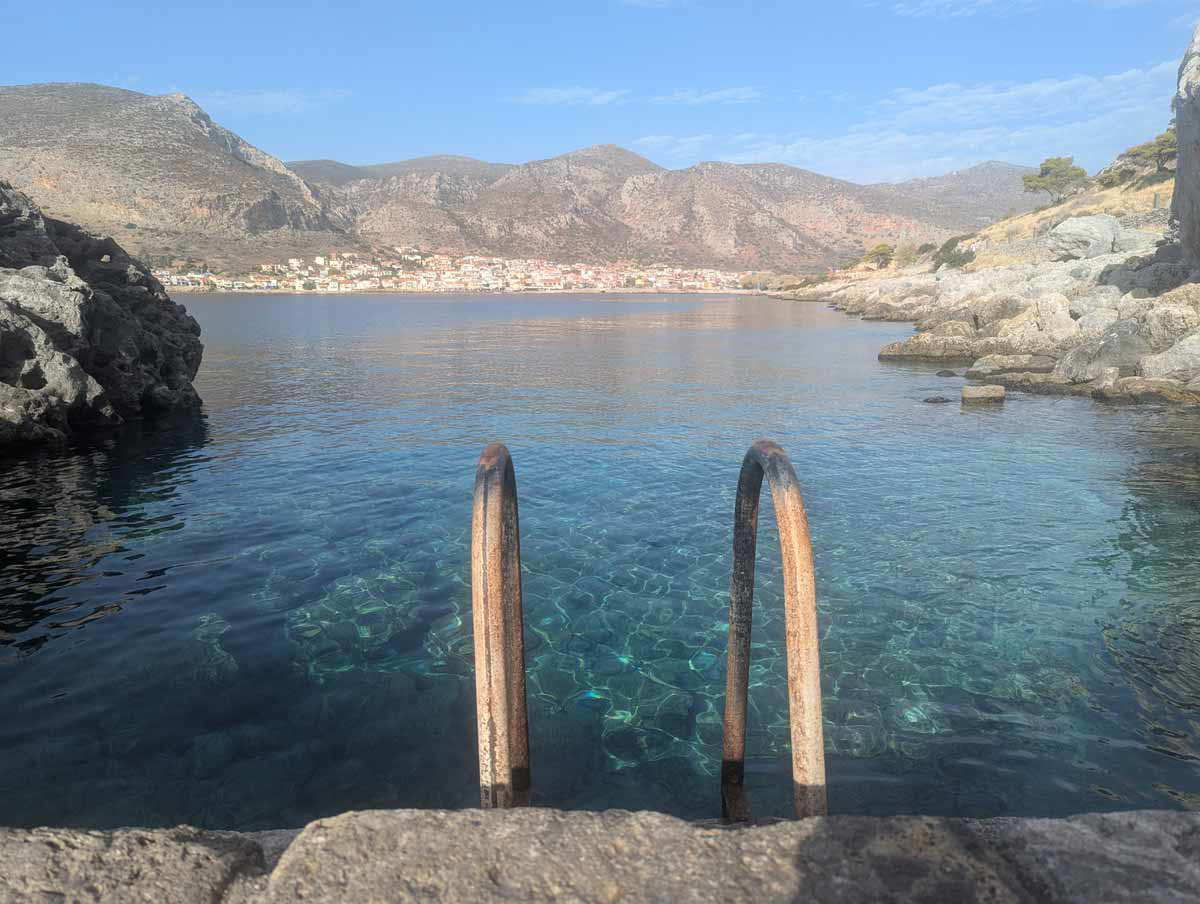
While water sports are an underdeveloped part of tourism in Monemvasia, the remnants of two prehistoric cities on the Monemvasia coastline remain. Snorkelers can explore the underwater ruins of Pavlopetri and Plytra.
Pavlopetri was settled in 3500 BCE and it is considered one of the oldest submerged cities in the world. The remains of Plytra are visible from the shore. During the Roman Empire, Plytra was considered one of the most important stops on Cape Maleas. Additionally, it served as an important point on Roman’s network of roads. Along the coastline, there are a few remaining tombs and bathhouses.



